What Is the Capital One Cup Soccer?
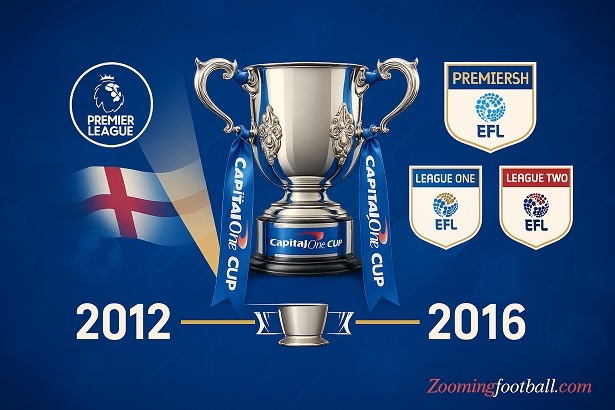
The Capital One Cup Soccer was a major English football tournament that excited fans across the world, especially in the United States. Known officially as the English Football League Cup (EFL Cup), the tournament was called the Capital One Cup from 2012 to 2016, due to a sponsorship deal with Capital One, a major U.S. bank. It featured top clubs from England’s top four leagues and offered a path to European football.
This cup began in 1960 and quickly became one of England’s most thrilling knockout competitions. Unlike the Premier League’s round-robin format, this tournament used a single-elimination format, bringing lots of drama. Over the years, the cup has had different names like the Carabao Cup, but to many American fans, it’s still remembered as the Capital One Cup.
History and Origins of the Capital One Cup Soccer
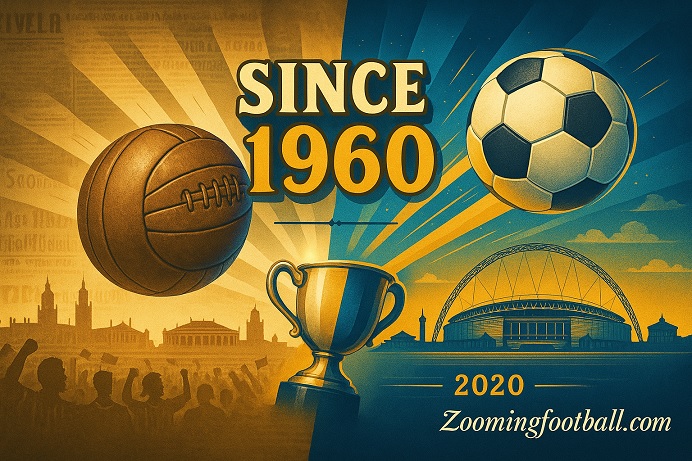
The tournament started as a way to boost revenues and give clubs more competitive games. It offered smaller clubs a rare chance to face giants like Liverpool, Manchester United, and Chelsea. When Capital One became a title sponsor, the cup reached wider global audiences, especially in the U.S. The sponsorship also helped bring live streaming, highlights, and media attention to American viewers.
Evolution of the Competition Format
In the beginning, matches were played over two legs. But over time, rules changed. Now, early rounds are single matches, and semi-finals are played over two legs. The final is held at Wembley Stadium, making it a huge event. With rule updates like no replays and penalty shootouts, the format keeps fans engaged.
Capital One Cup Soccer vs. EFL Cup – What’s the Difference?
There’s no real difference in structure. “Capital One Cup” is simply a branded name for the EFL Cup. Since the sponsorship ended, it’s been renamed the Carabao Cup, but many fans, especially in America, still refer to it by the older name. What matters is that the competition structure and history remain the same.
How the Capital One Cup Soccer Works
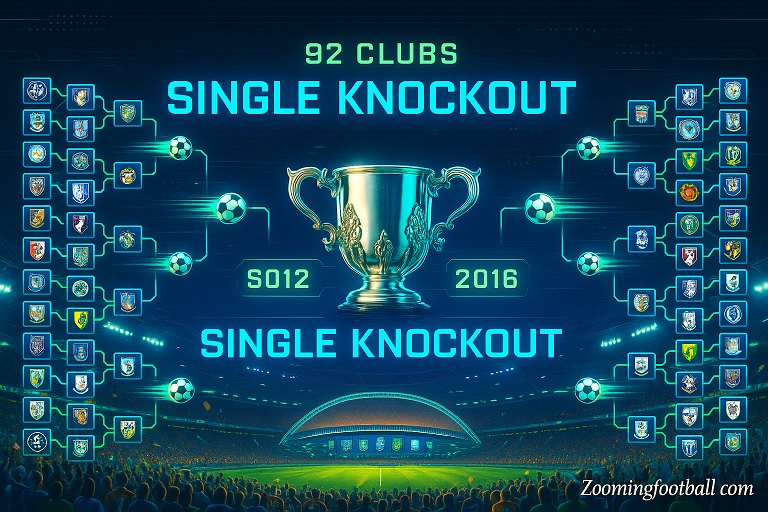
The tournament includes 92 clubs from the Premier League, Championship, League One, and League Two. It’s a knockout competition, meaning one loss can send a team home. The draw for each round is random, and this leads to surprise pairings and shocking outcomes.
Premier League teams join in later rounds to allow lower-league clubs a better chance. Big teams often rest top players in early rounds, but the deeper it goes, the more intense it becomes. This makes every game exciting.
Tournament Structure and Rules: Capital One Cup Soccer
Each match is played over 90 minutes. If there’s a draw, it goes straight to penalties in most rounds. Semi-finals are the exception, played over two legs (home and away). The final is one match at Wembley. This format leads to intense matchups and fast drama, ideal for U.S. fans who enjoy high-stakes sports.
Teams Eligible for the Capital One Cup Soccer
Clubs from these English divisions participate:
| Division | Entry Round |
| Premier League | 2nd or 3rd Round |
| Championship | 1st Round |
| League One | 1st Round |
| League Two | 1st Round |
This wide entry field ensures exciting David vs Goliath matches, something American sports lovers enjoy.
Knockout Rounds, Extra Time, and Penalty Shootouts Explained
If a match ends in a tie, it usually goes directly to penalties. Only the final used to have extra time, but even that was dropped recently to keep matches short and intense. Penalty shootouts bring edge-of-your-seat drama and often decide games between evenly matched teams.
Why the Capital One Cup Soccer Matters in English Football
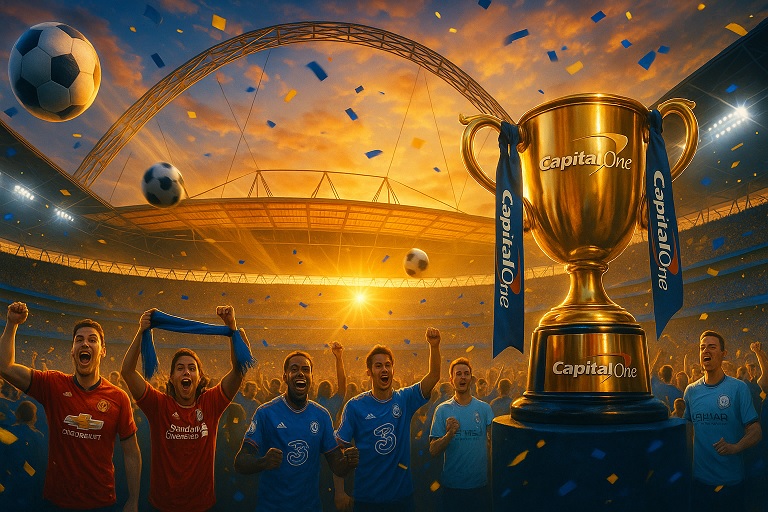
This tournament offers more than just a trophy. For smaller clubs, it brings national attention, revenue, and the chance to play at Wembley Stadium. For big teams, it offers a chance to give young players valuable minutes while still chasing silverware.
Winning the cup also provides a spot in the UEFA Europa Conference League, opening doors to international competitions. Clubs can use this to boost their global brand, something important to American investors and fans.
Impact on Clubs and Their Season
Clubs that take the cup seriously can build early-season momentum. It’s often the first domestic final of the season, making it a key milestone. A strong cup run can help a team’s morale and fan engagement.
Qualification to European Competitions
Winning this cup gives a club access to Europe, even if they don’t finish high in the Premier League. This makes the tournament especially important for mid-table clubs aiming for continental football.
Financial Rewards and Sponsorship Benefits
The winner earns millions in prize money, and the exposure can attract new sponsorship deals. Ticket sales, TV rights, and merchandise also boost revenue. Clubs in lower divisions benefit immensely from this income.
Legendary Matches and Memorable Moments: Capital One Cup Soccer
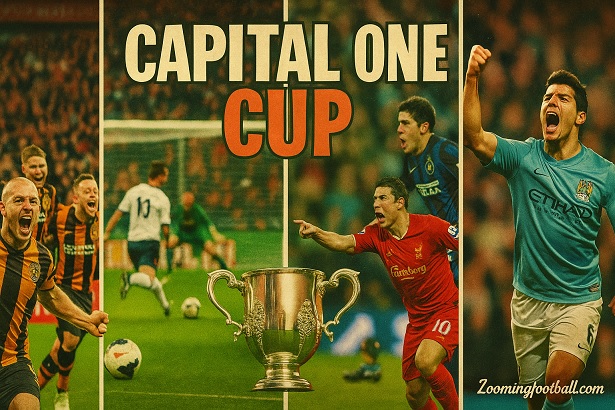
There have been many incredible matches in this cup’s history. From dramatic penalty shootouts to underdog wins, the Capital One Cup Soccer has never disappointed. Fans in the U.S. still remember when Bradford City (a lower league team) made it to the final in 2013.
Manchester City’s dominance in recent years, especially under Pep Guardiola, has also created unforgettable moments. From wonder goals to last-minute drama, every year brings something new.
Historic Upsets and Cinderella Stories of Capital One Cup Soccer
Clubs like Sunderland, Wigan Athletic, and Bradford City have made deep runs, beating top-tier opponents. These upsets are like March Madness in U.S. college basketball — anything can happen.
Record-Breaking Performances in Capital One Cup Soccer
Liverpool has won the cup 9 times, the most in history. Players like Sergio Agüero and Didier Drogba have shined in the final. These records keep fans invested and give players extra motivation.
Iconic Finals and Goal Highlights: Capital One Cup Soccer
The 2012 final between Liverpool and Cardiff City went to penalties, thrilling fans around the globe. Goals in finals often become viral highlights, especially in the U.S. where bite-sized clips drive viewership.
Top Teams and Players in Capital One Cup Soccer History
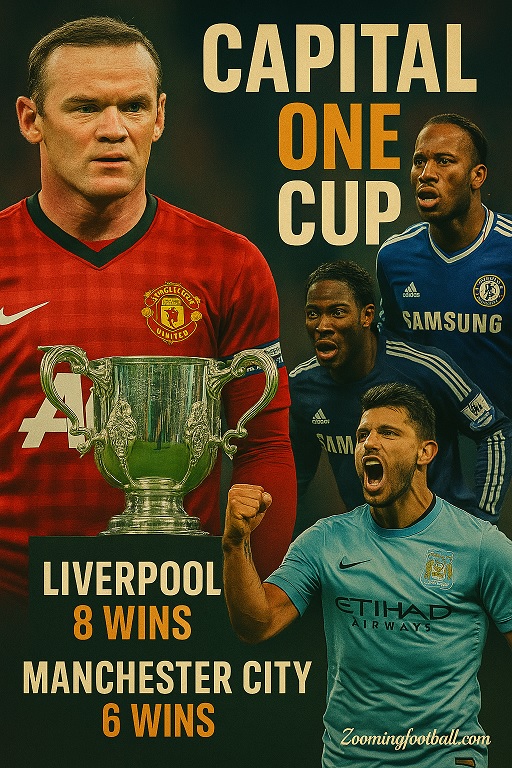
Top English clubs treat this competition seriously, especially in later rounds. It offers silverware and keeps players sharp. Managers often field younger squads in early rounds but go full strength in semi-finals and finals.
Chelsea, Manchester City, and Manchester United have all used this competition to build momentum and develop future stars.
Most Successful Clubs in the Capital One Cup Soccer
| Club | Titles Won |
| Liverpool | 9 |
| Manchester City | 8 |
| Manchester United | 6 |
| Chelsea | 5 |
These teams see the Capital One Cup Soccer as a real opportunity for success.
Standout Players and Golden Boot Winners
Strikers like Wayne Rooney, Harry Kane, and Carlos Tévez have delivered in big games. Scoring in a Wembley final boosts a player’s reputation and often leads to more opportunities.
Rising Stars Who Gained Fame Through the Capital One Cup Soccer
Players like Marcus Rashford and Phil Foden had their breakout games here. These matches help fans discover young talent, just like preseason games in the NFL or NBA Summer League.
Capital One Cup Soccer’s Role in Developing Young Talent

This cup is perfect for teams to test new players. It’s where youth academy graduates get their first taste of professional football. Managers often use it to experiment with lineups.
For American fans used to minor league systems, this provides a similar experience — watching young talent grow before reaching the big stage.
How the Capital One Cup Soccer Supports Youth Academies
Clubs like Arsenal and Tottenham use these games to try out teenagers from their academy. It gives these players match experience under pressure. It’s a bridge between youth football and the Premier League.
Notable Young Debuts in Capital One Cup Soccer Matches
Stars like Jack Wilshere, Bukayo Saka, and Trent Alexander-Arnold made their first-team debuts here. These stories show how vital this tournament is for long-term player development.
Broadcasting, Global Reach, and Fan Engagement
Matches are broadcast on ESPN+ and other U.S. sports platforms. This availability has helped the cup gain fans in the States. Highlights are widely shared on social media, growing its audience every year.
With kick-off times that often suit American time zones, fans enjoy easy access to games.
How to Watch Capital One Cup Soccer Matches
U.S. fans can stream matches on ESPN+, fuboTV, or check replays on YouTube. The availability of highlights and analysis has improved fan experience.
Global Viewership and Media Coverage of Capital One Cup Soccer
Thanks to smart marketing and viral highlights, the cup now enjoys millions of views across continents. It’s one of the top domestic cup competitions watched by American fans.
Social Media Buzz and Fan Reactions
Clips of spectacular goals, penalty saves, and celebrations often trend on social media. This helps the cup stay relevant and reach younger fans.
Capital One Cup Soccer and Club Management Strategies
Managers face tough choices during the Capital One Cup. Should they focus on the league, or try to win a trophy? This balancing act makes the tournament more interesting.
For fans, it’s a chance to see tactical changes, new formations, and player rotation strategies unfold.
Squad Rotation and Managerial Tactics
Managers like José Mourinho and Pep Guardiola have used this cup to build squad depth. Success here often comes from smart planning and knowing when to rotate the squad.
Balancing Domestic and International Competitions
Top clubs have to manage their calendar carefully. Playing in Premier League, Champions League, and domestic cups requires sharp focus. That’s why success in this tournament often reflects overall team management skills.
Sponsorships and the Business Side of the Capital One Cup Soccer
Capital One’s sponsorship boosted the cup’s reach in the U.S. The company used the event to promote its brand through commercials, digital ads, and halftime features. This partnership helped the cup go global.
The economics behind the cup are vital for clubs, broadcasters, and sponsors alike.
The Role of Capital One Cup Soccer as Title Sponsor
The American bank saw football as a way to expand its UK presence while also engaging U.S. soccer fans. Their sponsorship created a bridge between the U.S. and UK sports cultures.
Revenue Streams and Economic Impact on English Football
Broadcast rights, sponsorships, and merchandise sales bring millions to clubs and organizers. Lower-league clubs especially benefit from playing big matches at packed stadiums.
The Future of the Capital One Cup Soccer
There’s talk about possible changes to the format due to the crowded fixture calendar. But fans and clubs alike see its value, especially as a gateway to Europe.
More innovation, such as VAR, fan voting, or U.S. broadcast tie-ins, may keep the cup fresh and exciting.
Format Changes and Modern Challenges
Some experts suggest shortening the schedule or excluding top clubs. However, this could reduce the tournament’s value. Others propose making the final an international event, maybe even in the U.S.
Potential for Expansion or Rebranding
If another U.S. company sponsors it again, the cup might return under a new name. That could reignite interest among American fans who remember the Capital One era fondly.
Predictions for the Next Decade
With increasing international focus, the cup may gain more viewers from outside the UK. More American players could feature, adding another reason for U.S. fans to tune in.
You may also like this: Soccer Games Today
FAQs: Capital One Cup Soccer
Is the Capital One Cup the same as the EFL Cup?
Yes, the Capital One Cup is simply a past name for the EFL Cup. The format, history, and teams remain the same. Today, it’s known as the Carabao Cup, but many still refer to it by its older sponsored name.
Who has won the most Capital One Cups?
Liverpool holds the record with 9 titles, followed by Manchester City with 8. These top English clubs treat the cup seriously, especially in later rounds.
How is the Capital One Cup different from the FA Cup?
The Capital One Cup (EFL Cup) only includes 92 league clubs, while the FA Cup allows participation from hundreds of clubs, including non-league sides. The EFL Cup also finishes earlier in the season.
Where can I watch Capital One Cup matches in the U.S.?
Fans in the U.S. can stream matches on ESPN+, fuboTV, and catch highlights on YouTube. These platforms offer replays and expert commentary for American viewers.
What makes the Capital One Cup exciting for U.S. fans?
Its knockout format, penalty shootouts, and underdog stories make it thrilling. Many U.S. fans enjoy the fast pace, unpredictable matchups, and the chance to watch young stars emerge.
Has any small team ever reached the final?
Yes, Bradford City, from the fourth tier, reached the 2013 final, creating one of the tournament’s most talked-about moments. Such upsets keep fans hooked every year.
Why was it called the Capital One Cup?
From 2012 to 2016, the EFL Cup was sponsored by Capital One, a major U.S. bank. The sponsorship brought more U.S. attention to the tournament and helped it grow globally.
Final Thoughts: Why the Capital One Cup Soccer Remains Relevant
Even with newer tournaments and league demands, the Capital One Cup Soccer still holds its charm. It blends drama, opportunity, and history. It’s a perfect mix for fans who love knockout action.
For American fans, this cup offers a chance to follow underdogs, discover rising stars, and witness classic football moments.
Its Place in Football Culture
This cup may not be as prestigious as the Premier League, but it plays a special role in England’s football story. Fans love it for the unpredictability and passion it brings.
A Stepping Stone for Clubs and Players Alike
For many, this tournament is the first taste of glory. Whether it’s a club lifting their first trophy or a teenager scoring his first goal, the Capital One Cup makes dreams come true.

Oliver Brown, a seasoned football blogger with a knack for insightful commentary, brings decades of passion and expertise to Zooming Football. Known for his sharp analysis and engaging storytelling, Oliver delves deep into the game’s nuances, offering readers a unique perspective on football’s most captivating stories and strategies.







